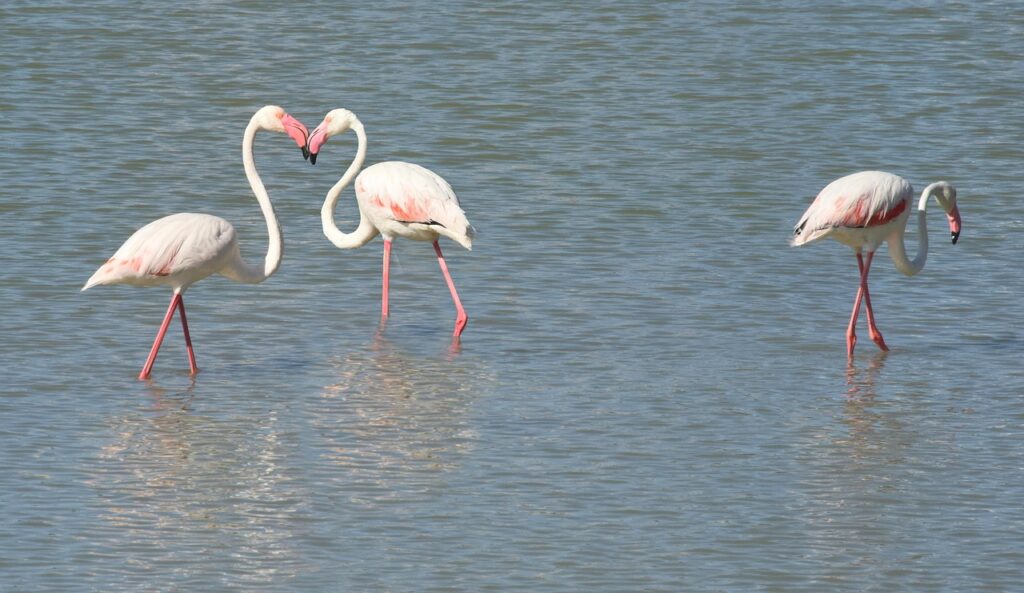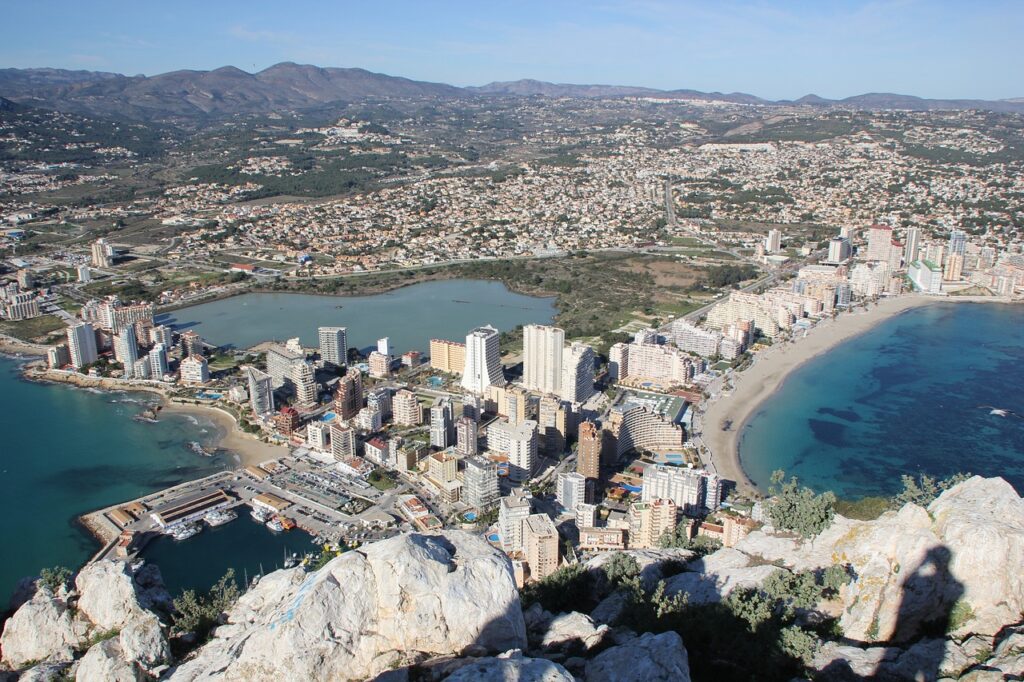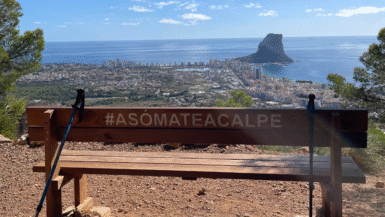If you’ve been to Calpe, you’ve likely seen the natural salt water lagoon sitting just behind the town. These lakes, known as Las Salinas de Calpe, are a fantastic sight with their pink-tinged waters and impressive wildlife including flamingos during the migration season.

I highly recommend visiting as its a lovely free thing to do while in Calpe. I’ve written a guide with all the information you need to know.
Where are the Calpe salt lakes?
The salt lakes sit at the foot of the famous Penon de Ifach rock in Calpe. They’re right next to the town centre, making them incredibly easy to visit even if you’re just in Calpe for the day.
History of the salt lakes
These salt lakes aren’t just pretty to look at – they’ve got a rich history too! The salt lakes formed in a low-lying area with deposits from the Quaternary period, and interestingly, the positioning of the Calpe rock played a big part in creating this unique wet area.

Ancient fish farms
If you visit the salt lakes, you’ll spot some excavated pools called “Baños de la Reina” (Queen’s Baths) on the sandbar near Calpe’s bay. These aren’t just random pools – they were actually fish farms!
Salt was incredibly important for the people of Calpe, as they needed it to keep their fish catches fresh.
During Roman times (around the 2nd century AD), the salt production worked hand-in-hand with those fish farms I mentioned. This was when the salt flats were at their most productive.
The salt from Calpe became so important that it supplied over 40 different towns and villages in the area! That’s quite impressive for what looks like a small lake today.
Ups and downs through history
Things started going downhill for the salt flats at the end of the 18th century. The still water became a breeding ground for insects, which caused fevers among the locals.
There were several attempts to get the salt flats working properly again. One notable effort was by a local man called Vicente Buigues (nicknamed “Ti Marguí”), who modernised the salt production. This continued until the late 1980s when production finally stopped for good.
In 1993, the area was officially declared a maritime-terrestrial zone, giving it protection.
Wildlife at the salt lakes
Today, the salt flats are home to all sorts of exotic birds.
The most eye-catching birds are definitely the pink flamingos! You’ll also see many other types of birds and plants that are specially adapted to live in this salty environment.
If you’re a birdwatcher, the salts lakes will be your paradise. Don’t forget to bring your camera!
You’ll see at certain times of the year, many pink flamingos visit the lake. These gorgeous birds visit in the migration season to the high salt content lake and the tiny shrimp that give the water its pink tinge.
The best times to see the flamingos are:
- Spring (March to May)
- Autumn (September to November)
During these periods, many flamingos stop here during their migration between Africa and France. If you’re lucky, you might see dozens of them feeding in the shallow waters.
Besides flamingos, you can spot:
- Avocets with their distinctive upturned beaks
- Black-winged stilts wading through the shallows
- Herons patiently hunting for fish
- Egrets in their stunning white plumage
Walking around Calpe’s salt lakes
If you fancy a visit, there’s a brilliant trail that goes partly around the salt flats. It’s been specially designed for bird watching, and it’s easy to walk – no steep hills or difficult terrain. The path forms a semi-circle, giving you great views from different angles.
The best part? It’s completely flat! No climbing or steep sections to worry about.
I recommend doing this walk either early morning or late afternoon, especially in summer. The area doesn’t have much shade, and the midday Spanish sun can be quite intense.
Make sure to bring:
- Water (there aren’t any shops along the route)
- Sun cream
- A hat
- Binoculars if you’re keen on birdwatching
- A camera
When to visit the salt lakes
You can visit the salt lakes all year round, but they look different depending on the season.
In summer, the water levels are lower, making the pink colour more concentrated. In winter, after rainfall, the lakes fill up more and might look more blue than pink.
For photography, I think late spring is ideal – you get good water levels, potential flamingo sightings, and it’s not too hot for walking.
Where to park
There’s a free car park just next to the Calpe salt lakes on Avenida Juan Carlos called Parking Gratis Calpe Subida Peñón.
It can get busy in high season, but if you arrive early (before 10am), you shouldn’t have any problems finding a space.
Alternatively, you can park in the town centre and walk to the salt lakes – it’s only about 10 minutes on foot from most parts of Calpe.
Nearby cafes
After your walk, you might be feeling a bit peckish! There are several spots to sit and eat with views of the salt lakes:
The Deutsche Bäckerei Les Salines is a German bakery which sits right next to the lakes and offers delicious coffees, homemade pastries and baked goods. They also have German breakfasts.
Are the salt lakes worth visiting?
Absolutely! The salt lakes are one of Calpe’s most unique attractions, and they offer something different from the beaches and mountains that most visitors focus on.
The walk is easy, the views are fantastic, and if you time it right for flamingo season, it’s a truly magical experience.
Plus, it’s completely free to visit, making it a brilliant addition to any Calpe itinerary, whether you’re staying for a week or just passing through for the day.
So next time you’re in Calpe, take a break from the beach and spend an hour or two at these fascinating salt lakes – I promise you won’t be disappointed!



